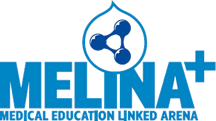Clearing through books last month with several bound for the charity shops I came across Critical Thinking in Nursing: An Interactive Approach, by Rubenfeld & Sheffer, with the following table (p.30):
| BEGINNERS | EXPERTS |
| Ways of: |
|
|
| Gaining Knowledge | Assigned readings and asking authorities | Multiple written and verbal sources, and experience |
| Thinking | Dualistic | Relativistic |
| Using rules | Context free | Situation dependent |
| Looking at situations | Narrow | Broad |
The table is not remarkable in its theme, but it is a useful prompt for Hodges' model and future studies. The concepts listed might help illustrate how Hodges' model can support learning. In addition to having an individual focus the model can consider any situation, hence the claim that the model is 'situated'. As stated previously person centeredness is not a given. It does not follow, nor is it achieved just because 'person centered' features several times in care philosophies and policies. The person must be put at the center of the model and then each of the domains considered together with the spiritual dimensions.
I'm also reading a nursing informatics book
(posts and review to follow) that discusses
casuistic
ethics, that is case-based reasoning. While the utility of casuistry is
debated in nursing, the need to consider the individual is always
paramount. A prime example of the focus on the individual is the
programme
Inside the Ethics Committee on BBC Radio 4. Central to ethics are the frequent dilemmas that arise in health and social care, the difficult moral choices and dichotomies that must be faced. The model can be used in a context free way, that is considering rules
in general; and also employed in specific contexts, such as a best
interest meeting for a person recently moved into a residential care
facility and distressed by the experience.
There are many dichotomies that can be identified in the basic model, and to a certain extent they reflect the dualistic thinking of the beginner as they build an understanding of particular fields of health care. As learners progress they integrate the concepts they encounter and are then able to associate these and relate them to prior learning, the current case and generate hypotheses that may also be predictive. Hodges’ model can frame and help represent student encounters be they narrow or broadening (recognising patterns). Gaining knowledge may need particular attention by the student (mentor and lecturer) in terms of the student's strategies for creating and protecting opportunities as a beginner and competent practitioner.
As a sign-off mentor I’ve become acutely aware – as required - of a learner’s level of skills and knowledge. What is their level of competence? What is their level of situational awareness? How are they progressing through their learning according to previous mentors and their own goals, learning objectives and evaluation? The concept of emotional intelligence is not new and still has the attention of researchers. Perhaps this could also inform questions for research into Hodges’ model as students elaborate their initial representations of nursing care, skills and knowledge through their course and ongoing as experts. Is emotional intelligence central to compassion in nursing? Encompassing all of these ‘ways’ in the table is reflection. This is not just for reflective practice but an ability to critique one's own practice and that of others.
The table is also helpful at this time considering future content and content types and the potential audience of a new website. The challenge is to emulate the table above in the way it reduces, simplifies very complex educational matters. Yesterday afternoon I was able to attend a very helpful two hour
research clinic in Lancaster, following this I must (still) reduce the above questions and also recognise my own biases.
Rubenfeld & Sheffer (1994)
Critical Thinking in Nursing: An Interactive Approach. 1st Edition, Lippincott Williams and Wilkins.






 orcid.org/0000-0002-0192-8965
orcid.org/0000-0002-0192-8965